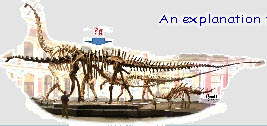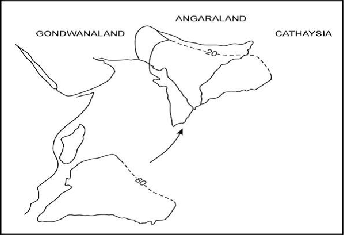


The theory of Plate Tectonics predicts that the Indian Plate was separate from the Asian Plate for tens of millions of years. Over geological time India drifted towards Asia, eventually crashing into Asia to form a neat suture zone between the two continents. Today’s geologists have spent many hours examining and debating this suture zone.
Three Indian geologists have recently highlighted significant problems with this seemingly simple theory. They start by wondering “how did the northern continental crust happen to be at the suture zone with a gap perfectly to fit the outline of the migrating Indian plate?” Even if they originally split apart before re-joining, “their perfect refitting would be nothing short of a miracle.”
Three Indian geologists have recently highlighted significant problems with this seemingly simple theory. They start by wondering “how did the northern continental crust happen to be at the suture zone with a gap perfectly to fit the outline of the migrating Indian plate?” Even if they originally split apart before re-joining, “their perfect refitting would be nothing short of a miracle.”
“...how did the northern continental crust happen to be at the suture zone with a gap perfectly to fit the outline of the migrating Indian plate?”
Khan, Tewari, & Hota
Khan, Tewari, & Hota
Share this page
The three Indian geologists, Zahid Ali Khana, Ram Chandra Tewarib and Rabindra Nath Hotac, discuss this tricky geological problem and many other related ones in their new paper, Problems in Accepting Plate Tectonics and Subduction as a Mechanism of Himalaya Evolution, published in a 2017 issue of the IOSR Journal of Applied Geology and Geophysics.
These geologists make the profound observation that all these problems are only problems for the Plate Tectonic theory, yet they aren’t problems for the rival Earth expansion theory.
It is possible to compare Plate and Expansion Tectonic reconstructions to see the difference. The short video below shows two different tectonic reconstructions: one is based on the theory of Plate Tectonics, while the other is based on Expansion Tectonics. Both reconstructions use the same data but there is a dramatic difference in the Indian region. A great gore opens up between the Eurasian and Indian plate with Plate Tectonics but doesn’t with Expansion Tectonics. This is the problem the three Indian geologists are discussing.
These geologists make the profound observation that all these problems are only problems for the Plate Tectonic theory, yet they aren’t problems for the rival Earth expansion theory.
It is possible to compare Plate and Expansion Tectonic reconstructions to see the difference. The short video below shows two different tectonic reconstructions: one is based on the theory of Plate Tectonics, while the other is based on Expansion Tectonics. Both reconstructions use the same data but there is a dramatic difference in the Indian region. A great gore opens up between the Eurasian and Indian plate with Plate Tectonics but doesn’t with Expansion Tectonics. This is the problem the three Indian geologists are discussing.

A comparison of Plate Tectonic and Expansion Tectonic reconstructions
Comment on this page
Related Pages
The Concept of Gondwanaland and Pangaea
Was there an ancient ocean between India and Asia?
An index of Interesting Publications
Latest News Comments and Updates
Main Evidence for the Expanding Earth theory
A Brief History of the Expanding Earth theory
References
Khan, Z.A., Tewari, R.C. & Hota, R.N. (2017) Problems in Accepting Plate Tectonics and Subduction as a Mechanism of Himalaya Evolution. IOSR Journal of Applied Geology and Geophysics (IOSR-JAGG) e-ISSN: 2321–0990, p-ISSN: 2321–0982.Volume 5, Issue 3 Ver. I (May - June 2017), PP 81-100 www.iosrjournals.org
Free pdf on Research Gate
Free pdf on Research Gate
Page last updated 04 Oct 2024
Wayback
Wayback




